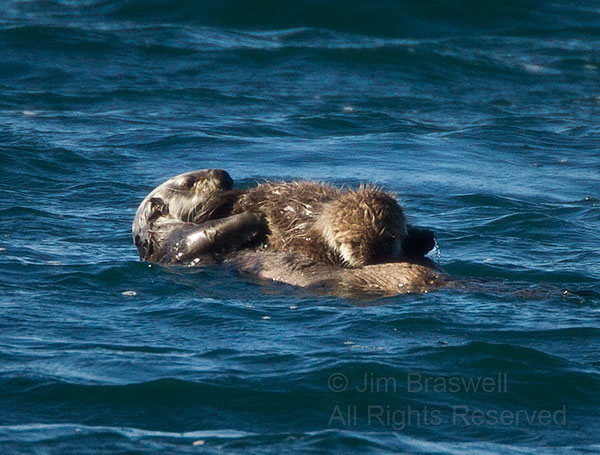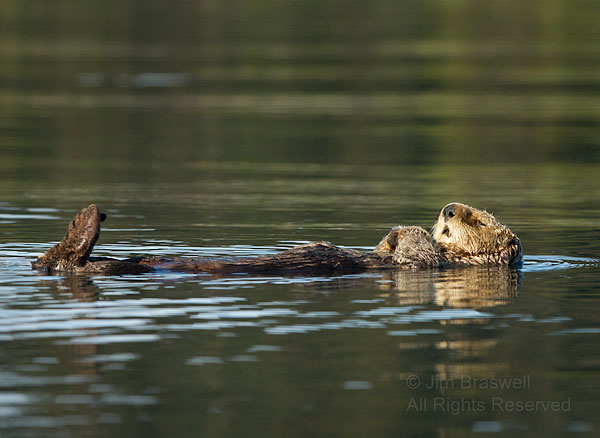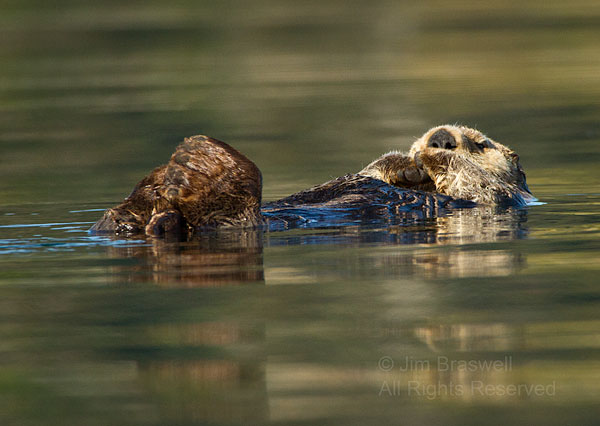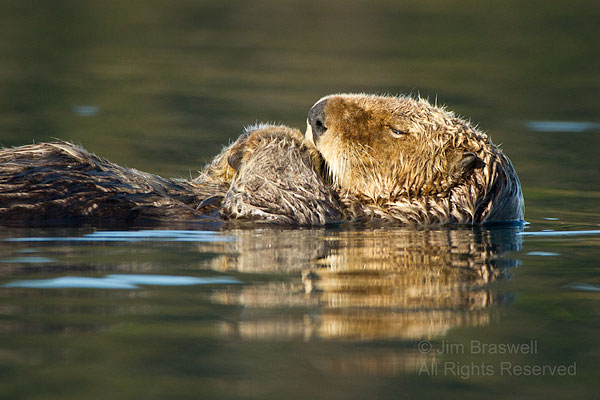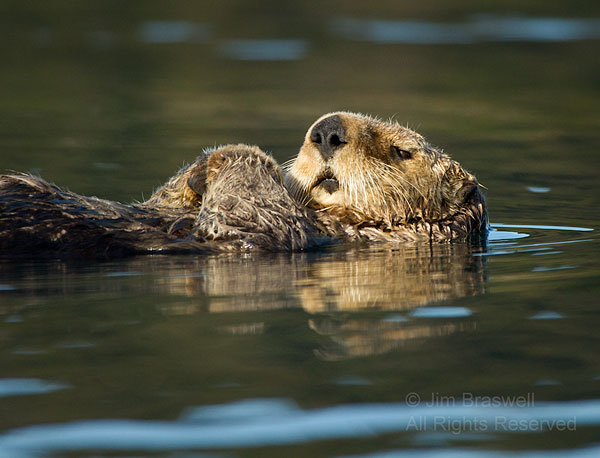Watch your heart, these guys are professional thieves … they steal hearts all the time! I think anyone who has been around the Sea Otter (Enhydra lutris) will attest to that. They are so comical to watch as they groom themselves while floating in the wavey waters, on their backs. Or when they are busy eating, again on their backs. Or when they are napping, again on their backs. Oh, and the really cute thing is to watch momma otter on her back, with her young pup lying on her tummy! They seem so content to just float around and be themselves. You might have seen my last Friday’s post “Fun Friday: Two Peas in a Pod”, which featured a mom otter with her pup, both watching us as we paddled past them.
Today’s post includes some more images I made in and just outside Little Tutka Bay, most from a kayak … enjoy! This first image shows another momma with a pup on her tummy:
Here is a male otter, resting as he floats in the ocean:
And notice his large, “clown” feet, a trademark of the sea otter. Their feet are webbed, with the hind feet being flipper-like:
In the next 2 images, I was able to let the kayak drift toward the resting otter quite closely:
But even while catnapping, he was keeping an eye on me:
A couple of photography tips if you are planning on photographing sea otters … or any other marine mammal:
- Always monitor the shutter speed you are using. With the subject (i.e., the sea otter) in the water, it will likely be in waters that rise and fall as the waves come in. So be sure to shoot at a high enough speed to stop the action … at least 1/500 second would be a great speed, if you can.
- If you are shooting from a moving boat or kayak (which you will likely be doing, unless you happen to be on a stationary dock) again, shutter speed will be the key. Actually, even more important since both you and the subject will be “moving” … 1/500 second will likely be the bare minimum you will need to assure a non-blurry image.
- If the surf is wavy, try to time your shot when the otter is at his “high” position. Otherwise, he may be hidden behind a swell.
- And if you’re shooting from a kayak, try getting “upstream” from the otter, and let the surf move you slowly toward him. With a little luck, you may get some great closeups!
If you enjoyed this blog post, please feel free to send a link to your friends and other photographers that you think will enjoy it!










